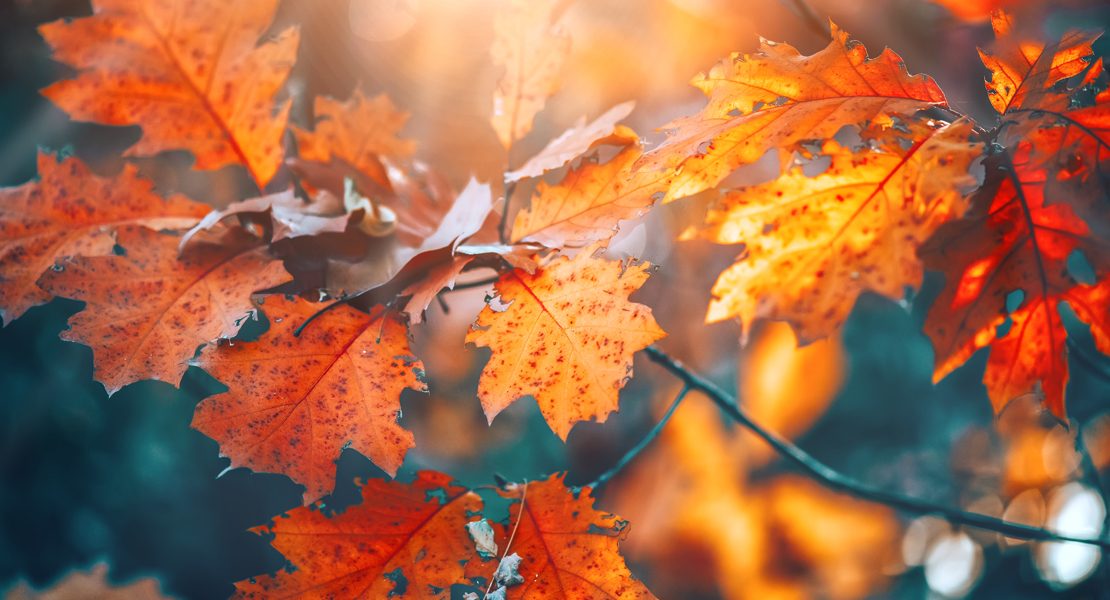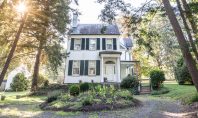Leaf Peeping Day Trips

A mountain excursion to see fall foliage is always a classic day trip, but the Lehigh Valley offers an abundance of options for leaf peepers right in our backyards.
This year’s foliage looks promising because of the adequate moisture the area has received and should be very similar to last year’s dazzling display, according to Rick Hartlieb, assistant district forester with the William Penn State Forest District. The district contains 1,683 acres in 10 separate tracts in Berks, Bucks, Delaware, Lehigh, Lancaster, Montgomery, Northampton, and Philadelphia counties.
Timing can shift by five to seven days, but the prime time for color in the Lehigh Valley is typically Oct. 25. “That seems to be a gold standard for us in terms of peak color,” Hartlieb says.
This year’s leaf show will be dimmed along the Blue Mountain ridges because of anthracnose, a fungal pathogen supported by the cool weather this spring and early summer. The disease has already shriveled leaves on chestnut oaks, a species that usually provides a palette of light brown foliage, Hartlieb notes.
But along the Valley’s rolling farmland, there will still be plenty of brilliant reds, oranges, and yellows from the gums, maples, birches, aspen, and the golden leaves provided by tulip poplars, one of the more abundant species found on hundreds of acres across the region, he says.
Hartlieb recommends two approaches to local leaf viewing: taking a driving tour of South Mountain in the Emmaus area and Blue Mountain along I-78, or hitting the trails at places such as the Lehigh Gap Nature Center in Slatington; the Dorothy Rider Pool Wildlife Sanctuary in Emmaus; Leaser Lake in Lynn Township; Jacobsburg Environmental Education Center in Bushkill Township; and Nockamixon State Park in northern Bucks County, just outside the Lehigh Valley.
“Between Lehigh and Northampton counties, the Lehigh Valley has awesome recreational facilities for the public,” Hartlieb says. “There are miles of trails within a short distance for anyone who wants to experience the outdoors on a nice fall day.”
Easton’s forester, Rob Christopher, enjoys how the local fall color changes every year depending on weather, which affects the chemistry and hues of autumn. Like Hartlieb, he has a list of recommendations to experience fall color.
“There are a few native trees I find spectacular to gaze upon as the chlorophyll production slows down, causing the remaining pigments to become more pronounced in the leaves,” he says. “Carotenoids mostly absorb blue-green light, therefore reflecting yellow. This would be highly visible in the stands of tulip poplars mixed in the slopes of the forest as you drive along Interstate 78 passing Lehigh University and through that open stretch of rolling hills.”
Another of Christopher’s favorites is the sweet gum tree, with its star-shaped leaves, somewhat pyramidal form “and its rather inconvenient spikey seed balls,” he says.
“This tree’s dominant pigment is anthocyanin, which, in the growing season, absorbs blue-green,” he notes. “In autumn, with the decrease in light, it starts to transform into a color range from scarlet to a deep purple.”
He says a beautiful specimen is at the Rodale Working Tree Center, just to the left as you pull onto Minesite Road in Allentown.
“There are others that are very noticeable in fall, such as our native dogwood, typically turning its canopy into a brilliant scarlet color,” Christopher says. “There’s also the small native tree called the sourwood or Lily of the Valley tree, which turns very bright red. My favorite place to see these fall colors is on Route 611 south of Easton along the Delaware River and continuing onto Route 32/River Road.”
Hartlieb describes the health of the Lehigh Valley’s forestland as stable. The dreaded emerald ash borer is taking its toll on stands of ash, robbing the region of the tree’s purple fall foliage.
“We’re starting to see widespread mortality,” he says. “We think there might be lingering ash, but it’s less than 1 percent of the population.”
Hartlieb says the state is treating healthy stands of ash with insecticides and by releasing insects that lay eggs on the emerald ash borer to keep the invasive insect in check. About 200 trees are being treated on three-year cycles.
“Once the wave moves through, we’ll have healthy trees for seed sources,” he says. “While we work to control this problem, our forests locally are in good health, accessible and here to enjoy. As with every year, the fall colors will start along the Appalachian Trail and work their way south.”
Explore Easton’s Oldest Trees
In his hunt for the oldest trees in Easton, Rob Christopher, the city’s forester, has found several dating to the 18th and early 19th centuries.
Christopher calls them “living witnesses” and has identified two giants, American sycamores, residing along the Karl Stirner Arts Trail between Route 22 and Bushkill Drive.
“The one at the Karl Stirner arch is estimated at 262 years old, starting its life around 1757,” he says. “Its elder companion, just feet off the Bushkill Creek near the old rail bridge, is around 292 years old, having started its life around 1727.”
A few others he has examined include a copper beech on the front lawn at the Lafayette Inn on
W. Monroe Street in Easton’s College Hill neighborhood. It’s estimated to be 213 years old. There’s a white walnut, estimated at 259 years old, in the West Ward on N. 10th Street. Its massive umbrella-like canopy covers six separate rear yards.
Another recent find, a Northern catalpa, grows on the side property of a private home in College Hill, coming in at around 230 years old. Lastly, another American sycamore in the narrow alley of Mary Street on College Hill came in at around 236 years old.
“I’m creating a registry of historic trees within the city of Easton,” Christopher says. “Eventually, I want to create a self-guided tour that one could find online with drop-down pinpoints of the trees where the public can either drive by to observe from their car or visit those on public property up close.”














